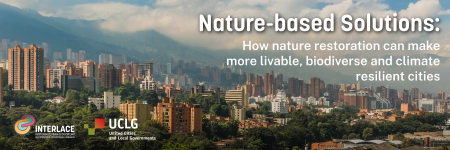
Resource description:
Urban areas across the globe are facing unprecedented challenges—pollution, climate change, urban sprawl—and traditional solutions are falling short. The INTERLACE project’s Massive Open Online Course showcases how nature-based solutions offer a promising approach to help create resilient, sustainable cities. The course covers: design and implementation of effective nature-based solutions; how to engage local communities with municipal actors in the co-creative processes involved; how to generate environmental, social and economic benefits for your city. The seven interactive modules feature videos from industry leaders, case studies, quizzes and additional reading so that you can equip yourself with the tools & knowledge to make a real impact in your community.
Licence:
- Free, no licence